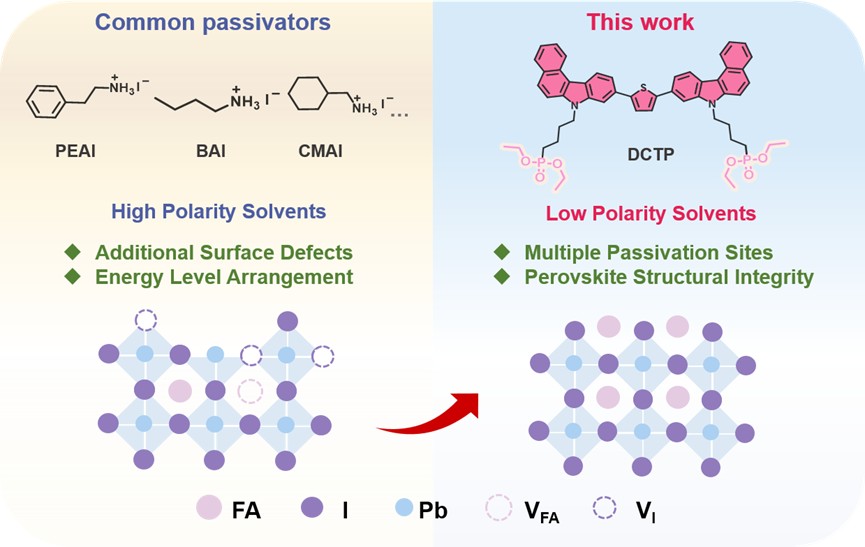A research group led by Prof. GE Ziyi from the Ningbo Institute of Materials Technology and Engineering (NIMTE) of the Chinese Academy of Sciences (CAS), in collaboration with Prof. QU Bo from Peking University, has developed a novel passivator soluble in low-polarity solvents, achieving a highly stable perovskite solar cell (PSC) with a power conversion efficiency (PCE) up to 26.07%.
This work was published in Advanced Materials.
PSCs have emerged as a highly promising third-generation photovoltaic technology due to their low fabrication costs and high PCEs.
Various passivators, such as ammonium salts and Lewis acids, effectively enhance PSC performance by reducing interfacial defects and suppressing non-radiative recombination. However, most conventional passivators require high-polarity solvents, which often cause additional defects on the perovskite surface. This limitation leads to compromised device stability and poor reproducibility.
To overcome this challenge, researchers at NIMTE synthesized a bisphosphate-based molecule passivator (DCTP), which can simultaneously address solvent compatibility issues, enhance defect passivation, and improve hole extraction.
DCTP demonstrates excellent solubility in low-polarity solvents (e.g., toluene, chlorobenzene, and chloroform) without damaging the perovskite surface.
When applied as an intermediate layer via chlorobenzene processing, DCTP effectively passivates surface defects, optimizes energy level alignment at the perovskite/hole transport layer interface, and significantly suppresses the interlayer diffusion of formamide (FA⁺), iodide (I⁻), and lithium (Li⁺) ions under thermal stress.
A champion PCE of 26.07% was achieved with the DCTP-treated device, setting a new record for perovskite solar cells using non-polar solvent-processed passivators.
Under the ISOS-D-2I protocol, the device retained over 90.1% of its initial PCE after 900 hours at 65 °C, indicating its exceptional operational stability.
This work unlocks a novel multifunctional passivator design that dissolves in low-polarity solvents, paving the way for high-performance and scalable photovoltaics.

Fig. DCTP's superior solubility in low-polarity solvents without surface damage versus conventional passivators (Image by NIMTE)
Contact
YANG Daobin
Ningbo Institute of Materials Technology and Engineering
E-mail: yangdaobin@nimte.ac.cn

